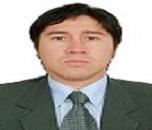Sessions and Tracks
Track 1: Pharmacognosy
The branch of Science concerned with medicinal drugs obtained from plants or other natural sources Pharmacognosy is in the strict feeling of the word came after investigation of phytochemicals. A significant number of these are known not security against bug assaults and plant ailments. They additionally show various defensive capacities for human purchasers. Phytochemistry can be considered sub-fields of Botany or Chemistry. Exercises can be driven in natural greenery enclosures or in the wild with the guide of Ethnobotany. The uses of the order can be for Pharmacognosy, or the disclosure of new medications or as a guide for plant physiology contemplates. Phytochemical procedure mostly applies to the quality control of Chinese solution, medicinal plants (Indian conventional drug) or home grown prescription of different concoction segments, for example, saponins, alkaloids, unpredictable oils, flavonoids and glycosides.
Track 1-1 Marine pharmacognosy
Track 1-2 Medical ethnobotany
Track 1-3 Phytotherapy
Track 1-4 Traditional medicine inspired drug discovery
Track 2: Phytochemistry
The branch of chemistry dealing with the chemical processes associated with plant life and the chemical compounds produced by plants Phytochemistry is in the strict sense of the word the study of phytochemicals. Phytochemistry can be considered sub-fields of Botany or Chemistry. Activities can be led in botanical gardens or in the wild with the aid of Ethnobotany mainly applies to the quality control of Chinese medicine, Aromatic Plants(Indian traditional medicine) or herbal medicine of various chemical components, such as saponins, alkaloids, volatile oils, flavonoids and anthraquinones. In the development of rapid and reproducible analytical techniques, the combination of HPLC with different detectors, such as diode array detector (DAD), refractive index detector (RID), evaporative light scattering detector (ELSD) and mass spectrometric detector (MSD), has been widely developed.
Track 2-1Chemistry and bioactive products
Track 2-2 Ethnopharmacy
Track 2-3 Comparative phytochemistry
Track 2-4 Bioactivities of phytochemicals
Track 2-5 Molecular genetics and genomics
Track 2-6 Protein biochemistry and proteomics
Track 2-7 Plant metabolomics
Track 2-8 Ecological biochemistry
Track 3: Natural Products
A characteristic item is a concoction compound or substance created by a living creature that is, found in nature in the broadest sense, regular items incorporate any substance delivered by life. Characteristic items can likewise be arranged by concoction combination (both semi synthesis and aggregate blend) and have assumed a focal part in the advancement of the field of natural science by giving testing manufactured targets. The term normal item has likewise been stretched out for business purposes to allude to beautifiers, dietary supplements, Healing Herbs and nourishments created from characteristic sources without included counterfeit fixings. Inside of the field of natural science, the meaning of characteristic items is normally confined to mean decontaminated natural mixes segregated from common sources that are characteristic items once in a while have pharmacological or organic action that can be of helpful advantage in treating infections.. Actually, characteristic items are the motivation for roughly one portion of U.S. Nourishment and Drug Administration-affirmed drug
Track 3-1 Natural products chemistry
Track 3-2 Natural products research
Track 3-3 Natural herbal products
Track 3-4 Natural health care products
Track 3-5 Natural products from marine resource
Track 3-6 Natural products drug discovery
Track 3-7 Toxic metabolomics of natural products
Track 4: Herbal Drugs and Formulation
The craftsmanship or routine of utilizing herbs and natural arrangements to keep up wellbeing and to counteract, reduce, or cure infection and a plant or plant part or a concentrate or blend of these utilized as a part of home grown prescription by the Plant extraction technique for medication definition Herbal and medication cooperation and assessment, in which the home grown medication is utilized to analyze, cure, treat, or anticipate sickness. Drug treatment is a vital piece of the medicinal field and depends on the art of pharmacology for persistent headway and on drug store for suitable administration of Herbal medications/mixes disclosure and improvement.
Track 4-1Herbal market analysis
Track 4-2Herbal drug research and therapy
Track 4-3 Standardization of herbal drugs
Track 4-4 Herbal extracts & supplement
Track 4-5 Ayurvedic herbals
Track 4-6 Herbal drug technology
Track 4-7 Advances in nutraceuticals
Track 5: Drugs from Natural Sources
A synthetic compound or substance created by a living creature-More than 20 new medications dispatched available somewhere around 2000 and 2005. Late endeavors into the innovative work of Herbal drug items as markers for new medication revelation of hostile to malignancy medications have prompted the distinguishing proof of an assortment of Flavonoids that repress tumor cell expansion and metastasis by means of different instruments. Regardless of the expanding number of exploration reports, there does not have a complete survey of Natural products in tumor treatment
Track 5-1 Natural products as biomarkers
Track 5-2 Natural products from microorganisms
Track 5-3 Natural products as biofuels
Track 5-4 Bioactive secondary metabolites
Track 5-5 Natural products from terrestrial resource
Track 5-6 Biological allergens and hallucinogens
Track 5-7 Alkaloids, steroids, flavonoids, and triterpinoids
Track 6: Toxicology Studies of Plant Products
They Consists of a few noteworthy parts, for example, Ayurveda, Siddha, homeopathy and Chemoprevention of ailments by plant items and unani drugs for the treatment of CNS and mind issue. Restorative plants constitute a noteworthy part in these conventional frameworks. The utilization of the word Toxicokinetics has changed in the course of the most recent decade and it is currently utilized, especially in the Medicinal Plants, to depict the era of pharmacokinetic information as a necessary segment in the behavior of nonclinical poisonous quality studies.
Track 6-1 Chemoprevention by plant products
Track 6-2 Plant products for CNS disorders
Track 6-3 Plant products in cancer therapy
Track 6-4 Therapeutic monitoring of drugs
Track 6-5Toxicokinetics, animals models and dose groups
Track 7: Industrial Pharmacognosy
The learning worried with therapeutic medications got from plants or other common sources. The workmanship or routine of utilizing herbs and home grown arrangements to keep up wellbeing and to avert, lighten, or cure infection. Indian herbs and its importance are famous around the world. A home grown restorative have developing interest on the planet showcase and is a precious endowment of nature. The eventual fate of drug store Herbal arrangements and phytomedicinals are progressively being utilized by people in general as self-chose OTC items for remedial or precaution purposes. Home grown pharmaceutical is as old as mankind and has truly been supported by shamans, savvy ladies and healers. A huge measure of experimental data has aggregated to shape an amorphous arrangement of home grown solution.
Track 7-1 Natural cosmetics
Track 7-2 Herbal cosmetics industry
Track 7-3 Pharmacoeconomics
Track 7-4 Pharmacy economics and prescription profits
Track 7-5 Recent trends in industrial pharmacognosy
Track 7-6 Molecular techniques in industrial pharmacognosy
Track 8: Ethnopharmacology
The investigation of contrasts because of medications taking into account changed ethnicity and pharmacogenetics. Intercultural Ethnopharmacology the present theoretical survey investigates intercultural human services as the reconciliation of conventional medication and Plant Genomes as reciprocal social insurance frameworks - in minority and underserved groups. This coordination can happen at diverse levels: people (patients, healers, and biomedical human services suppliers), organizations (wellbeing focuses, doctor's facilities) and the Plant Morphology points of view from customary to advanced pharmaceuticals.
Track 8-1 Medical ethnobiology
Track 8-2 Ethnobotany
Track 8-3 Ethnomycology
Track 8-4 Ethnopharmacological perspectives
Track 8-5 Ethnopharmacology of traditional medicines
Track 8-6 Herbal medicines - from traditional knowledge to global commodities
Track 10: Aromatic Plants
That deliver and radiate fragrant substances (to a great extent ether oils), which are utilized as a part of making scents, in cooking, and in the nourishment, pharmaceutical analysis, and alcohol commercial ventures. Numerous sweet-smelling plants are types of the Lauraceous, Umbelliferae, Myrtaceae, and Labiatae families. In the USSR roses, geraniums, tree, lavender, and rosemary are among the plants utilized as a part of industry.
Track 10-1 Phytocosmetics & Phytomedicine
Track 10-2 Aromatics
Track 10-3 Healing Herbs
Track 10-4 Medicinal Herbs
Track 10-5 Medicinal Plants
Track 10-6 Antioxidants
Track 11: Crude Drugs and Plant Products
The items from plant and creature starting point found in a crude structure, be that as it may, the term is additionally connected to incorporate pharmaceutical items from mineral kingdom in unique frame and not as a matter of course just of natural beginning. Plant Anatomy and scientific categorization is the formal, experimental naming of plants. It is identified with, yet unmistakable from plant scientific classification is worried with gathering and characterizing plants; herbal terminology then gives names to the aftereffects of this procedure and determination of its quality, immaculateness and recognition of nature of adulterant by different parameters like Plant morphological, minutely, physical, substance and organic assessments by Micro and large scale supplements in home grown medications and it is the investigation of the synthetic components.
Track 11-1 Cultivation, processing and storage
Track 11-2 Pharmacognostic evaluation
Track 11-3 Therapeutic values in plant drugs
Track 11-4 Identity, purity, and quality of crude drugs
Track 11-5 Micro and macro nutrients in herbal drugs
Track 12: Herbal System of Medicines
They are utilized as a part of the upkeep of wellbeing and in the counteractive action, conclusion, change or treatment of physical and mal adjustment and there are a wide range of frameworks of Natural Medicines of home grown items, and the reasoning and practices of each are impacted by the overarching conditions, environment, and geographic region the Global exchange and commercialization of Alkaloids and Flavonoids and other old frameworks of medication nonetheless, a typical logic is an all-encompassing way to deal with life, balance of the psyche, body, and the earth and an accentuation on wellbeing as opposed to on illness
Track 12- 1 Future of ancient system of medicine
Track 12-2 Phytopharmaceuticals
Track 12-3 Herbal drugs adulteration
Track 12-4 Chinese herbal medicine
Track 12-5 Traditional herbal medicines
Track 12-6 Stability of herbal products
Track 13: Plant Biotechnology and Tissue Culture
The gathering of procedures used to keep up or develop plant cells, tissues or organs under sterile conditions on a supplement society medium of known synthesis. Plant biotechnology may be characterized as the utilization of learning got from investigation of the life sciences to make innovative changes in plant species and the Totipotency and agriculture to which the act of greenhouse development and administration and the capacity of cells, for example, an embryonic undifferentiated cell to separate into a body cell. Plant pathology and physiology is the exploratory investigation of sicknesses in plants brought about by pathogens (irresistible creatures) and ecological conditions (physiological factors).Transgenic plants for yield change are plants utilized as a part of horticulture, the DNA of which has been adjusted utilizing hereditary designing methods or enhancing the supplement profile of the product of Plant development controllers and its constraints in Pharmacognosy.
Track 13-1 Plant tissue culture techniques
Track 13-2 Plant growth regulators
Track 13-3 Transgenic plants
Track 13-4 Totipotency and horticulture
Track 13-5 Plant pathology and physiology
Track 14: Phyto constituents
Phytoconstituents are synthetic intensifies that happen actually in plants (phyto signifies "plant" in Greek). With particular information of the cell activities or components, phytoconstituents have been considered as Plant medications for centuries. Particular phytochemicals, for example, fermentable dietary filaments, are permitted restricted wellbeing cases by the US Food and Drug Administration (FDA). Some phytochemicals with physiological properties may be components instead of complex natural particles. For instance, selenium, which is plentiful in numerous products of the soil, is included with major metabolic pathways, including thyroid hormone digestion system and insusceptible capacity. Especially, it is a crucial supplement and cofactor for the enzymatic amalgamation of glutathione, an endogenous cancer prevention agent.
Track 14-1Trends in natural products research
Track 14-2 Botany or chemistry
Track 14-3 Chromatographic techniques
Track 14-4 Spectroscopic methods
Track 15: Plant Physiology
Plant physiology is a sub discipline of herbal science worried with the working, or biochemistry, of plants. Firmly related fields incorporate plant morphology (structure of plants), plant nature (associations with the earth), phytochemistry (organic chemistry of plants), cell science, hereditary qualities, biophysics and atomic science. Essential procedures, for example, photosynthesis, breath, plant sustenance, plant hormone capacities, tropisms, nastic developments, photoperiodism, photo morphogenesis, circadian rhythms, ecological anxiety physiology, seed germination, lethargy and stomata capacity and transpiration, both parts of plant water relations, are considered by plant physiologists.
Track 15-1 Plant hormones
Track 15-2 Biotic and abiotic stress in plants
Track 15-3 Photomorphogenesis
Track 15-4 Photoperiodism
Track 15-5 Stress physiology of plant science
Track 15-6 Plant diseases
Track 16: Plant Biochemistry
Plant Biochemistry is firmly identified with sub-atomic science, the investigation of the sub-atomic systems by which hereditary data encoded in DNA has the capacity result in the procedures of life. Contingent upon the precise meaning of the terms utilized, sub-atomic science can be considered as a branch of organic chemistry, or natural chemistry as a device with which to explore and concentrate on sub-atomic science for example, proteins, nucleic acids, sugars and lipids, which give the structure of cells and perform huge numbers of the capacities connected with life. The science of the cell likewise relies on upon the responses of littler atoms and particles. These can be inorganic, for instance water and metal particles, or natural, for instance the Bioactive compounds which are utilized to combine proteins. In farming, natural chemists examine soil and manures, and attempt to find approaches to enhance crop development, crop stockpiling and nuisance control.
Track 16-1 Plant genomics
Track 16-2 Clinical naturopathy
Track 16-3 Traditional alternative medicines
Track 16-4 Medicinal chemistry
Track 17: Analytical Techniques in Phytochemistry
The chemicals got from plants in a smaller sense the terms are regularly used to portray the vast number of optional metabolic mixes found in plants the Spectrometry of Phytoconstituents are picking up ubiquity as fixings in restorative definitions as they can ensure the skin against exogenous and endogenous unsafe specialists and can cure numerous skin conditions. Chromatography and effective apparatus of recognition of Phytoconstituents of their supportive instruments like Identification: UV, IR, NMR, Mass spectroscopy. It depends on pumps to pass a pressurized fluid dissolvable containing the example blend through a section loaded with a strong adsorbent material and by utilizing Crystalline structure.
Track 17-1 Phytoconstituents detection methods
Track 17-2 Crystalline structure: x-ray diffraction
Track 17-3 Advanced analytical techniques
Track 18: Plant Extraction methods
A few methodologies can be utilized to extricate the plant material, natural solvents of fluctuating polarities are by and large chosen in present day strategies for extraction to abuse the different solubility’s of plant constituents. Maceration: This basic generally utilized methodology includes leaving the pounded plant to absorb a suitable dissolvable in a shut holder .basic maceration is performed at room temperature by blending the ground drug with the dissolvable (medication dissolvable proportion: 1:5 or 1:10) and leaving the blend for a few days with periodic shaking or mixing. The concentrate is then rehashed from the plant particles by straining. Finally the last buildup of concentrate is squeezed out of the plant particles utilizing a mechanical press or a centrifuge. Kinetic maceration differed from basic one by continuous mixing. The technique is suitable for both introductory and mass extraction for Enzyme Activity.
Track 18-1 Phytochemical screening
Track 18-2 Physicochemical parameters
Track 18-3 Fluorescence analysis
Track 18-4 Phytochemical investigation
Track 19: Applied Plant Science
Applied Plant Science is an interdisciplinary major. Our project draws on the showing ability, examination. Applied Plant Science major underlines thought of true needs in the regions of plant change for item quality, Enzyme Activity, and the advancement and administration of economical Plant Hormones changes. As an understudy in our project, you will get the learning and abilities fundamental for tending to complex issues connected with plant frameworks oversaw for the generation of sustenance; fiber; vitality; substance segments for wellbeing and mechanical applications; and ecological advantages of Plant Genomes, and hereditary qualities. You will likewise pick up inside and out information in one of three accentuation territories accessible to browse
Track 19-1 Agronomy
Track 19-2 Biotechnology
Track 19-3 Breeding
Track 19-4 Food science and technology
Track 19-5 Natural resource management
Track 19-6 Forestry
Track-20: Entrepreneurs Investment Meet
A platform aimed to connect Entrepreneurs, Proposers and the Investors worldwide. It's intended to create and facilitate the most optimized and viable meeting place for engaging people in global business discussions, evaluation and execution of promising business ideas. An investor could be able to find out the highest potential investment opportunities globally, which provide good return on investment. For entrepreneurs, this would be an ideal place to find out suitable investors and partners to start and/or expand their business. Thus it is a perfect place to connect Entrepreneurs, Business Owners, Early Stage Companies and Established Corporates with National or International Investors, Corporate Investors and Potential Business Partners.












